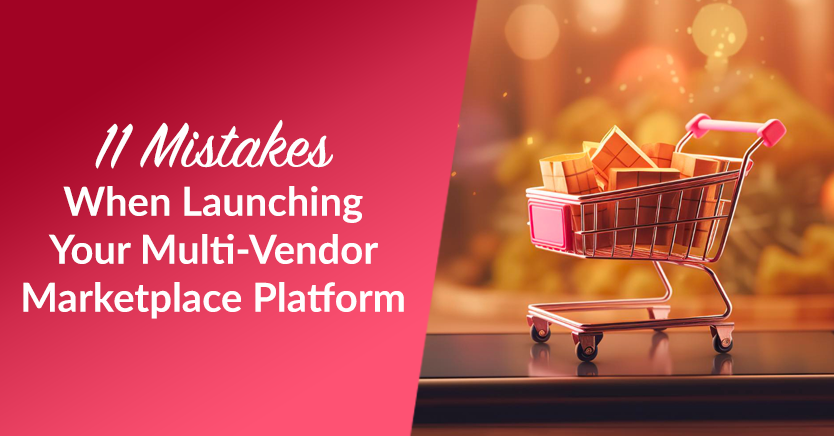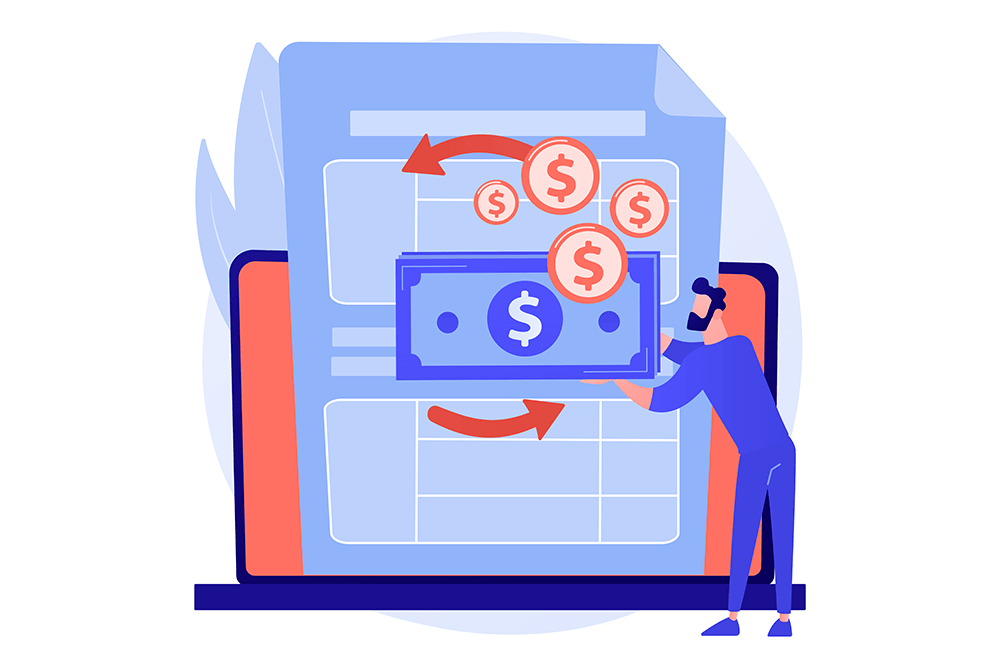
Because the multi-vendor marketplace platform can be exceedingly profitable, many aspiring businesspeople launch online shopping hubs every year. However, while some succeed, others struggle to get by.
It’s important to remember that starting any kind of business is no walk in the park. If you want to achieve your goals, you’ll need not just considerable time and meticulous planning; you’ll also need to know what mistakes to avoid to prevent your endeavor from collapsing all around you.
Thus, today’s article will discuss 11 common mistakes people make when launching not just multi-vendor marketplaces but e-commerce stores in general. This way, you’ll know the right decisions to make and the best strategies to employ to boost your chances of success.
So let’s get right into it!
The 3 Main Areas To Focus On
When launching a multi-vendor marketplace platform, many people new to e-commerce make mistakes in three major areas:
For this reason, we’ll be categorizing the mistakes to avoid according to these three areas.
I. Business Operations
Do you want to start a multi-vendor marketplace platform? Then you have to acknowledge that you are, in fact, starting a business.
In other words, you can’t just put a platform together in a day and expect it to make money. That’s not how any business works. You need to consider various aspects, including having your plans in place, choosing the right revenue models, and ensuring all your legal aspects are covered.
Mistake 1: Business plan

Before you even begin considering what technology to use to build your multi-vendor marketplace platform, you need to have a business plan. This is what you’ll follow to ensure that you’re on the right track and that you have metrics to measure.
Unfortunately, many people skip straight to selecting a platform without even thinking about what or how they’ll build their business. As you can expect, this results in failure. After all, without a road map, you’ll get lost!
What is a business plan?
To put it simply, a business plan is a document that outlines the various aspects of your business. This should include the following:
- Your clearly defined mission
- How your business will be funded
- The technical aspects of maintaining your multi-vendor marketplace platform
- 18-24 months of financial projections, including required funding and profit and loss projections
- Who your target users are (customers/vendors)
- Clearly defined commission rates
- Marketing and advertising plans
- Analysis of your competitors including price ranges, commission structures, affiliate systems, and more
- Onboarding systems for vendors & customers
Your business plan serves as a compass during challenging times, guiding your focus and revealing areas that may or may not be effective. It should evolve with your business as you discover what works and what doesn’t.
Thankfully, many online resources can help you build a business plan. Here are 3 of them:
- How to Write a Business Plan on Just One Page – BPlans.com
- Business Plans 101: How to Write a Business Plan For Any Business – Shopify
- How to Write a Business Plan for Ecommerce Success – OptinMonster
Mistake 2: Revenue models
There are hundreds of multi-vendor marketplace revenue models out there. Thus, you’ll need to research not just said models but also your competition to see what their rates are and what will work for you. Two of the most popular models are:
- Commission-based
- Membership-based
When developing your revenue model, you need to take the following into account.
- Payment gateway fees (which are usually around 3% of the sale)
- How much work it takes to manage and maintain your multi-vendor marketplace platform
- Your ongoing support costs
- Customer acquisition costs
- Vendor acquisition costs
- Marketing costs

Commission-based model
Commission rates can make or break your multi-vendor marketplace platform. If you haven’t completed your business plan or lack a clear understanding of your revenue model, then chances are you’re going to experience some problems. Some of the things to consider include:
- Setting realistic commission rates
- Determining your take (depending on the industry/products/services, it should ideally be 30-60%)
- Rewarding top sellers with better commission rates
Far too often, we see new marketplaces charge as little as 5% commission or no commission at all with no other revenue models planned. Low commission rates are not sustainable when you first start a business, so you’ll need to find out what the average rates are. Don’t try to compete against the largest marketplaces, as these are platforms with saturation levels that allow them to be sustainable. The advantage you have is a focused group of vendors and customers.
The commission rates can vary widely depending on the industry. For example, WooCommerce charges 40% for their marketplace while Getty Images charges a whopping 80%, leaving vendors with just 20% of any sale.
Popular marketplaces that work on a commission rate model include:
Membership-based model
The other most popular model is to charge sellers a monthly fee. This provides vendors with various benefits and features depending on the membership level they’re subscribed to.
This model can serve as an excellent way to launch your multi-vendor marketplace platform and guarantee ongoing revenue from day one. Furthermore, you can use it in partnership with a commission model, and charge different commission rates depending on the membership level. Our plugin WC Vendors Membership can extend your multi-vendor marketplace to a membership-based model.
When choosing your membership levels, your options must be clear and concise. In addition, ensure that there aren’t too many levels. Otherwise, potential vendors might find it overwhelming to select the most suitable option for their needs.
eBay is a popular marketplace that uses a membership model.
Mistake 3: Legal requirements

Part of doing business includes setting up your legal structures, documents, and agreements. This is no different when starting your multi-vendor marketplace platform.
When establishing a business, consider the following regulatory requirements:
- Business license
- Insurance
- Policies
- Privacy policies
- User agreements
- Vendor agreements
- Refund policies
- Support policies
- Copyright notices
- DMCA requirements
- Jurisdiction requirements
Taxes
When dealing with your taxes, handling marketplace taxes and your business taxes can get complex. If you’re based in the United States, you’ll need to consider new Marketplace Facilitator laws when creating your platform.
Take note these are just general tips. Thus, make sure to consult a lawyer and accountant regarding the different legal aspects of establishing a business.
II. Platform
The platform aspects of your multi-vendor marketplace are defined as the technology that powers your business. After the business plan, this is the most critical aspect of your daily operations.
The following aspects of your platform are where the most common mistakes occur:
- Marketplace features
- Market expectations
- Payment solutions
- Payout solutions
Choosing your platform is essential and should be researched in detail. Will you use a hosted solution? Or will you build your own marketplace powered by WordPress and WooCommerce?
Mistake 4: Marketplace features

When choosing a platform, consider the features you need vs. the features you want.
Just because one of the big marketplaces boasts a specific feature doesn’t mean you need the same feature for your platform. A common error people commit when launching their multi-vendor marketplace platform is that they try and add every feature possible. This results in too many plugins and maintenance issues.
Work out what the minimum viable feature set is and launch with that. It’ll ensure your site runs quickly and launches early. Moreover, find the niche that works best for you and stick to it; only introduce new features to your marketplace when your sellers and customers demand it.
Don’t forget to regularly ask for feedback and test the results. After all, the only way you can tell if something is working is to collect data and test!
Mistake 5: Market expectations
During your initial business plan, conduct competitor and market research to determine what features and systems your competitors are using.
Keep the following strategies in mind:
- Don’t try and compete against the larger marketplaces
- Find a good niche and saturate it
- Your strength is the lack of noise for both your customers and your vendors
Mistake 6: Payment processing
Some people start building their marketplaces and then only consider their payment processing as an afterthought, typically a week before they launch. Sadly, this is a grievous error, considering most payment processors take a while to set up accounts. Furthermore, you need ample time to test the payments you’re receiving from your customers.
Choosing a payment gateway requires research. You need to consider various aspects of available gateways, including:
- Fees and charges
- Payout schedules
- Chargeback fees
- Refund processes
WC Vendors Marketplace supports any payment gateway developed for WooCommerce to process payments from customers. This is completely separate from paying vendors their commission dues.
Mistake 7: Vendor payouts

Determining how and when to pay your vendors is a critical step that many online marketplace owners leave to the last minute.
True, vendor payouts can be a complex process especially when starting a multi-vendor marketplace platform. After all, it involves potential fees, legal requirements, and tax implications based on the specific location of your launch. However, it’s utterly necessary if you want your business to soar.
Also, you should consider how you’ll pay your vendors. Will you implement an automatic, scheduled, or manual process? If you choose the first two methods, you have limited options on most marketplace solutions. Moreover, an automatic schedule can make processing refunds difficult if not impossible.
Thankfully, there are many great options available that reduce or eliminate such issues. Some popular vendor-capable payment gateways include:
III. Operations
Multi-vendor marketplace operations are ongoing systems and processes that you need to plan and refine over time. While you can set up your own standard operating procedures, you also need to test and revise them as your business grows.
Among the most common mistakes people make are associated with the following ongoing operations:
- Platform maintenance
- Refund management
- Customer support
- Vendor support
Mistake 8: Platform maintenance
Keeping your systems running smoothly is critical to the success of your multi-vendor marketplace platform. Not having a maintenance plan can cause your business to grind to a halt. The result? You lose customers and vendors alike.
Far too often, the following aspects are either poorly managed or completely forgotten:
Staging server
In our staging server article, we outline why it’s important to have one in your business. Without a staging server, you can’t test your themes and plugin updates safely. In addition, it’s difficult to introduce and test new features without one.
Having a staging site will make it easy for you to have a planned update and maintenance schedule.
Ask for feedback
Before you invest time and money in a few features, request feedback from your vendors and customers. There’s no point in adding a feature if you can’t justify it. Only add a feature when it is necessary.
Our support team often logs into a multi-vendor marketplace platform to perform support and observe 70, 80, or even 90 plugins activated. This is a disaster waiting to happen, so please, don’t do this.
Mistake 9: Refund management

Refunds are an inevitable part of doing business. This is even more true of an online business such as a multi-vendor marketplace platform.
When developing your refund policies and ongoing management, you need to consider customer and vendor expectations. Who’ll cover the refund? Will it be the vendor or the platform? How you process refunds can depend on the payment processor you choose.
If you don’t have a solid refund policy and refund process, this can upset not just your customers but also your vendors, who might even end up leaving your multi-vendor marketplace platform. In addition, make sure that your payment processor has good fraud detection systems and refund processing, or you’ll soon find yourself with operational bottlenecks.
Thankfully, popular payment gateways for WooCommerce support refund management within WordPress, thus making things easier for business owners.
Mistake 10: Customer support
Great customer support is vital to every business. This is because it ensures prompt, effective aid to your shoppers, which is a must.
Unfortunately, if you lack a solid support system and a reliable help center, you might find yourself swamped with requests for assistance, making it challenging to keep up with everyone’s needs. For instance, among the most prevalent errors in customer support is solely relying on basic contact forms and emails as the primary means of providing assistance. In the worst-case scenario, a customer’s email might inadvertently land in your junk folder, resulting in a missed opportunity to respond.
Thus, customer support is best handled via a ticket-based system. Basically, this allows you to scale your team and provide timely support.
Avoid sending customer support to your inbox; over time, managing this approach becomes overwhelming and leads to a rapidly escalating mess. Thankfully, there are a lot of ticket-based solutions available, some of the most popular being:
- HelpScout (this is what we use here at WC Vendors)
- ZenDesk
- FreshDesk
- Awesome Support (WordPress plugin option)
Mistake 11: Vendor support

Along with not having an effective customer support system in place, another aspect that people frequently neglect is vendor support. You can’t assume that your vendors will just work everything out; if you want them to succeed, you need to give them the tools they need to achieve their goals.
Thus, after building your platform, you should create user guides on the various features your vendors can access. In addition, providing them with a self-help support system can prevent frustrations and increase the likelihood of successful onboarding.
We recommend using the support systems mentioned in the previous section related to customer support. This way, you can effectively manage any queries your vendors may have. Moreover, it’s a good idea to set up a seller forum so that vendors can interact with and help one another. This will not only reduce your overall support load but also increase the sense of community.
Conclusion
When launching a multi-vendor marketplace platform, business owners need to make sure they know what they’re doing. This includes avoiding the common pitfalls that can cause their business to sink.
To summarize, the 11 mistakes to avoid when starting your multi-vendor marketplace platform revolve around:
- Your business plan
- Revenue models
- Legal requirements
- Marketplace features
- Market expectations
- Payment processing
- Vendor payouts
- Platform maintenance
- Refund management
- Customer support
- Vendor support
Remember that you can never plan too much when it comes to launching and maintaining a successful multi-vendor marketplace platform. Also, take note that the advice provided in this article applies not only to online marketplaces but to standard online stores, as well.
Do you have any questions about how to build a successful multi-vendor marketplace platform? How about WC Vendors Pro, the WooCommerce marketplace solution that lets you effortlessly create and run your own online shopping hub? Let us know in the comments section!
One thought on “11 Mistakes When Launching Your Multi-Vendor Marketplace Platform”
Comments are closed.